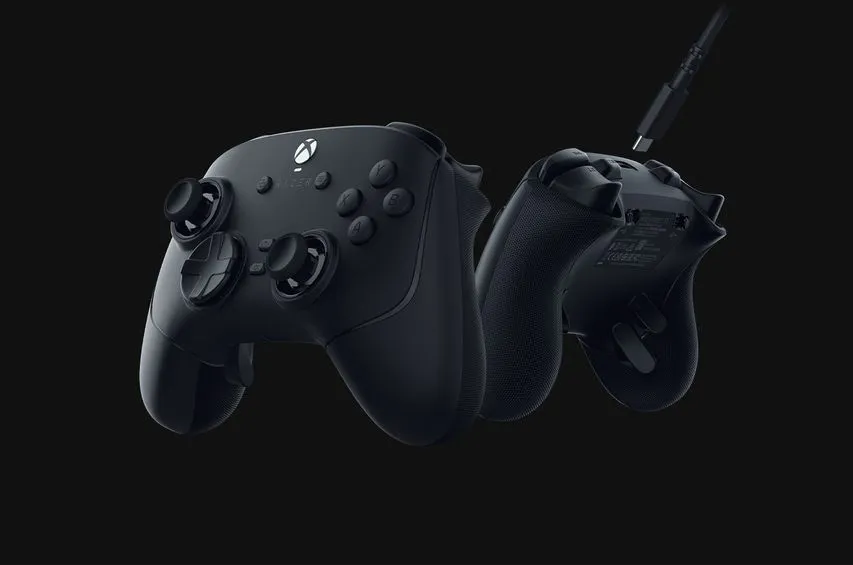
Locked features, misleading software: Why I can’t recommend the Razer Wolverine V3 TE
by Kai Ochsen
When I purchased the Razer Wolverine V3 Tournament Edition controller, I wasn’t just buying a gamepad, I was buying into a promise. Razer’s reputation, the premium build, the specs on paper, it all painted a picture of a high-performance, cross-platform controller meant to elevate the console gaming experience. I had done my research, checked the official listings, read the promotional content, and saw a tool designed not just for casual gamers but for those of us who wanted a bit more. More control, more responsiveness, more refinement.
But from the moment I unboxed the controller, something felt off. Not in terms of looks, it’s a sleek piece of hardware, no doubt. The grips are comfortable, the buttons feel solid, and the triggers? Hall Effect-based, they said, the kind that should last longer and register inputs with surgical precision. And it does work, at least, it powers on, connects, and you can game with it. But here’s the kicker: the actual features Razer advertises, the ones that make it a “Tournament Edition,” are either locked away behind incompatible software or outright inaccessible depending on what device you own.
For starters, I wanted to tweak the trigger sensitivity, remap a couple of buttons, and maybe experiment with different profiles. That’s what they promise, right? Pro-level customization. Except, none of those features can be accessed from the Xbox console itself. Yes, the same Xbox the controller was supposedly made for. The configuration app Razer once offered for Xbox? Deprecated. Quietly abandoned. If you’re on macOS like me, well, you’re out of luck. Razer doesn’t offer any configuration software for macOS. Your only hope? Install their Windows-only software, which they never mention as a hard requirement on the product page.
I reached out to Razer Support almost immediately. At first, I thought I was missing something, maybe a new app was in the works, or I had downloaded the wrong version. But over the next few days, the conversation became a loop. Polite apologies, canned responses, and vague reassurances that they'd forward the issue to the appropriate team. Every single day, for over three weeks now, I’ve been in contact with them. And nothing has changed. The suggestion, repeated subtly and sometimes not so subtly, was: find a Windows machine. That’s it. That’s their solution.
It’s frustrating enough as a customer to buy a product and not get what you expected. But what stings more is realizing that you weren’t just unlucky, you were misled. Razer sells the Wolverine V3 TE as a fully Xbox-compatible controller with pro-grade features, and at no point does their documentation or store page mention that most of these features only work on Windows. There’s no disclaimer, no asterisk, no heads-up about the Xbox app being discontinued. They just let you buy it, plug it in, and discover the truth the hard way.
What’s worse, this situation isn’t just annoying, it may also be unlawful under European consumer protection laws. Directive 2019/770 requires that digital elements tied to a product must be functional and accessible as promised. And Directive 2005/29/EC directly addresses misleading advertising and unfair commercial practices. If a product’s core features are hidden behind unavailable software, and that isn’t clearly disclosed, it’s hard to argue that consumers are making an informed decision. Platforms like Amazon, where many of these controllers are sold, are also expected to enforce accurate listings through their Seller Code of Conduct.
Now, I’m not writing this because I want a refund. Honestly, I don’t. I want to use the controller I paid for, all of it. I want to take advantage of the trigger customization, button remapping, and performance tweaks that Razer’s marketing proudly boasts about. I want to believe that the brand stands by what it sells.
But this experience has been a stark reminder of a larger issue in the tech industry: the creeping rise of locked ecosystems and half-promised features. Companies love to throw around words like "compatible" and "customizable," but rarely do they clarify the conditions, that those features might only work on one operating system, or might disappear entirely if an app is deprecated. And when support fails to offer real solutions, we’re left with shiny boxes and hollow value.
If you’re reading this because you were thinking about buying the Wolverine V3 TE, I’d encourage you to hold off. Not because it’s a bad controller, the hardware is fine. But because right now, it doesn’t do what Razer says it does. And unless they step up and fix the software situation or start being honest about platform limitations, it’s hard to recommend their products in good faith.
After three weeks of back-and-forth with Razer and no real answers, I’m not just disappointed, I feel deceived. I didn’t want a refund. I wanted what was promised. And that, in the end, shouldn’t be too much to ask.